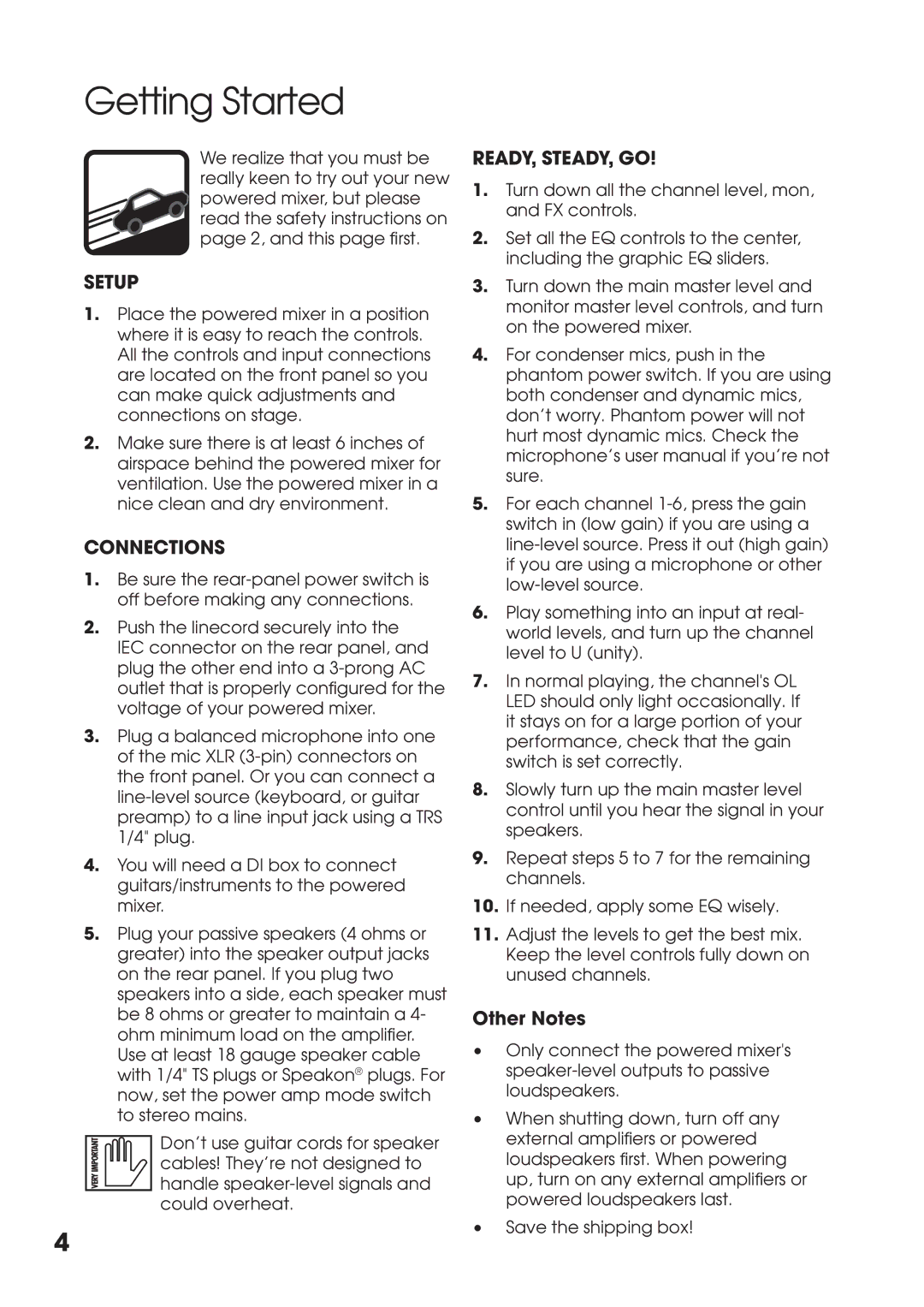
Getting Started
We realize that you must be really keen to try out your new powered mixer, but please read the safety instructions on page 2, and this page fi rst.
SETUP
1.Place the powered mixer in a position where it is easy to reach the controls. All the controls and input connections are located on the front panel so you can make quick adjustments and connections on stage.
2.Make sure there is at least 6 inches of airspace behind the powered mixer for ventilation. Use the powered mixer in a nice clean and dry environment.
CONNECTIONS
1.Be sure the
2.Push the linecord securely into the IEC connector on the rear panel, and plug the other end into a
3.Plug a balanced microphone into one of the mic XLR
4.You will need a DI box to connect guitars/instruments to the powered mixer.
5.Plug your passive speakers (4 ohms or greater) into the speaker output jacks on the rear panel. If you plug two speakers into a side, each speaker must be 8 ohms or greater to maintain a 4- ohm minimum load on the amplifi er. Use at least 18 gauge speaker cable with 1/4" TS plugs or Speakon® plugs. For now, set the power amp mode switch to stereo mains.
![]() Don’t use guitar cords for speaker
Don’t use guitar cords for speaker
cables! They’re not designed to handle
4
READY, STEADY, GO!
1.Turn down all the channel level, mon, and FX controls.
2.Set all the EQ controls to the center, including the graphic EQ sliders.
3.Turn down the main master level and monitor master level controls, and turn on the powered mixer.
4.For condenser mics, push in the phantom power switch. If you are using both condenser and dynamic mics, don’t worry. Phantom power will not hurt most dynamic mics. Check the microphone’s user manual if you’re not sure.
5.For each channel
6.Play something into an input at real- world levels, and turn up the channel level to U (unity).
7.In normal playing, the channel's OL LED should only light occasionally. If it stays on for a large portion of your performance, check that the gain switch is set correctly.
8.Slowly turn up the main master level control until you hear the signal in your speakers.
9.Repeat steps 5 to 7 for the remaining channels.
10.If needed, apply some EQ wisely.
11.Adjust the levels to get the best mix. Keep the level controls fully down on unused channels.
Other Notes
•Only connect the powered mixer's
•When shutting down, turn off any external amplifi ers or powered loudspeakers fi rst. When powering up, turn on any external amplifi ers or powered loudspeakers last.
•Save the shipping box!
